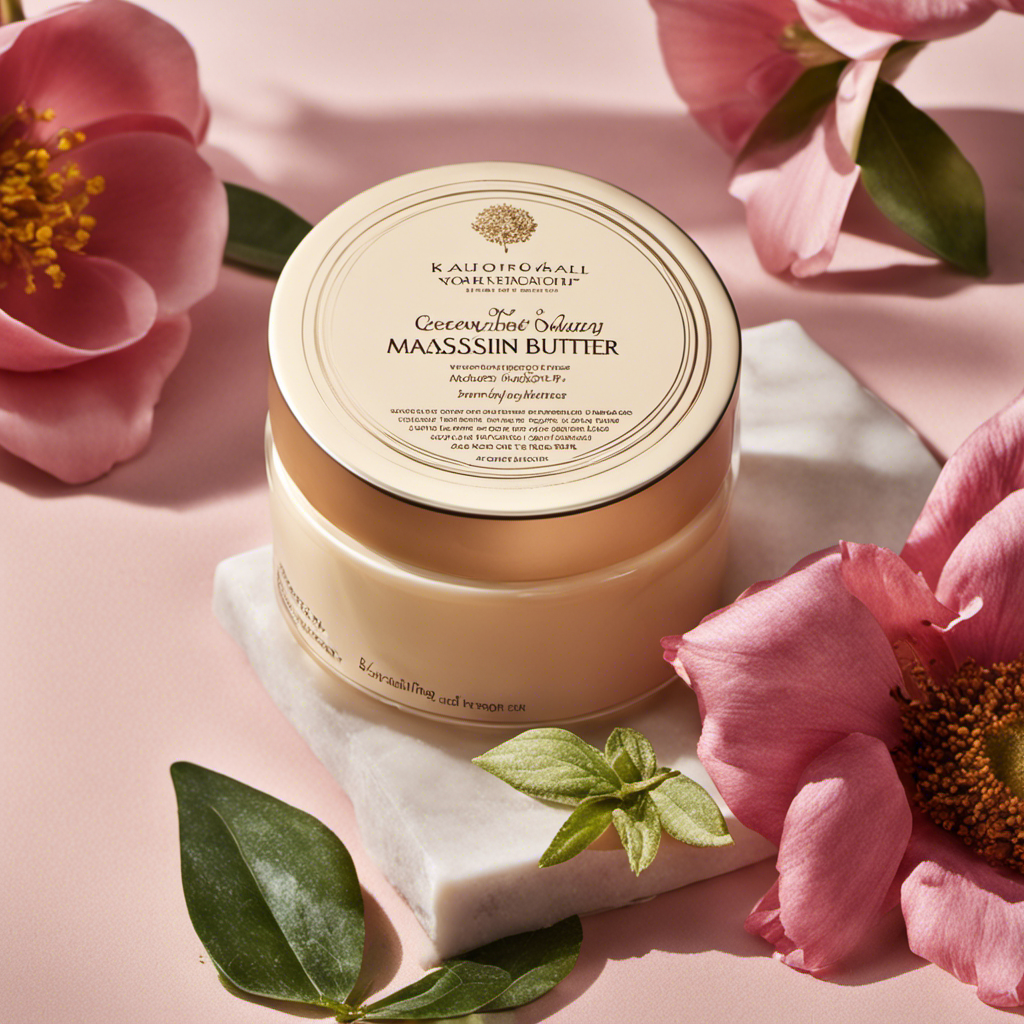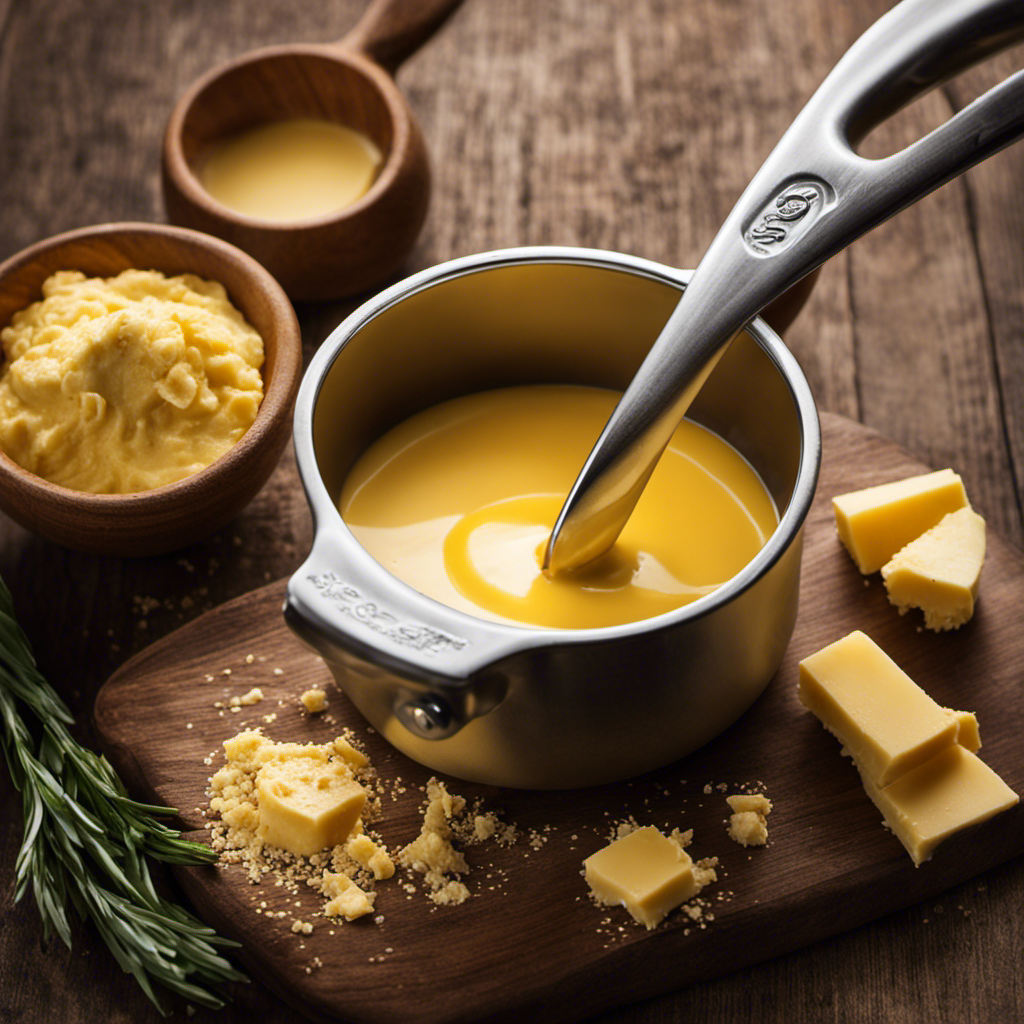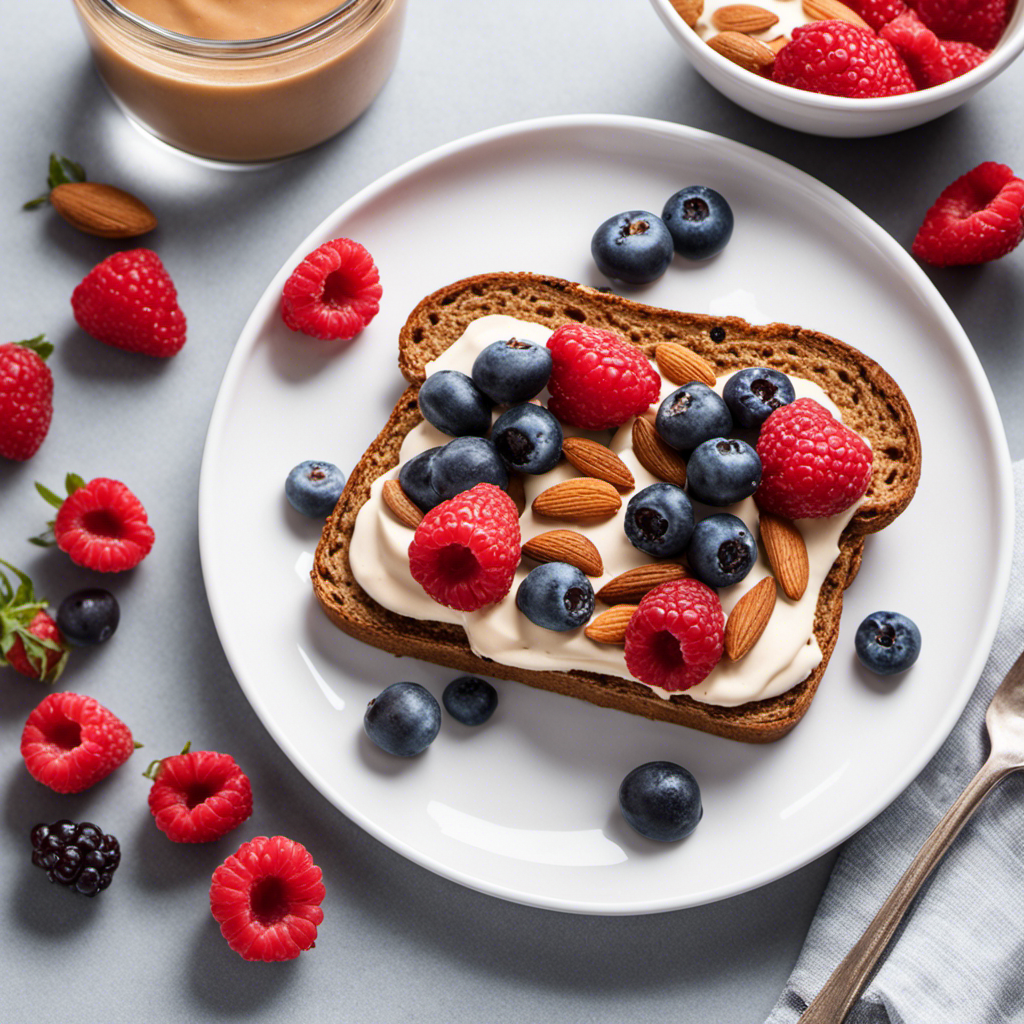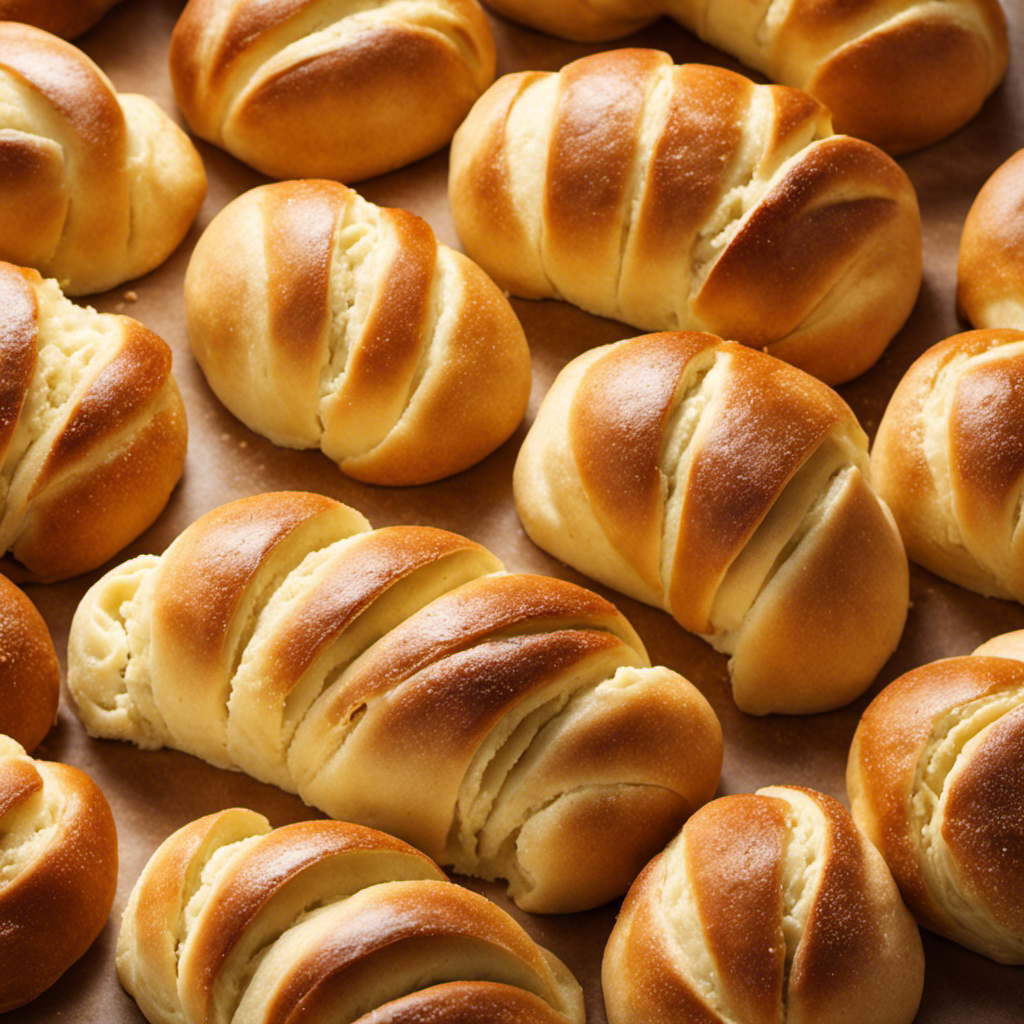Are you aiming to elevate your dessert game? Ready to dive into a lusciously creamy delight? Look no further than cookie butter!
This delectable spread is a game-changer in the kitchen. Whether you’re baking, spreading it on toast, or even incorporating it into savory dishes, cookie butter adds a burst of flavor that will leave you craving more.
Get ready to discover the endless possibilities of this sweet and savory delight.
Key Takeaways
- Cookie butter can be used in baking to enhance the flavor of baked goods by creaming it together with butter and sugar.
- Spreading cookie butter on toast can provide a creamy texture and sweet, buttery flavor, and can be enjoyed with various toppings such as sliced bananas or mixed berries.
- Making cookie butter milkshakes can elevate the milkshake game by pairing the rich and creamy taste of cookie butter with alternative options available for those without cookie butter, and can be garnished creatively for an Instagram-worthy presentation.
- Cookie butter alternatives, such as cookie butter frosting or cookie butter ice cream, can provide the same rich and creamy flavors as cookie butter and can be enjoyed in different ways to expand one’s culinary repertoire.
Baking With Cookie Butter
You can enhance the flavor of your baked goods by adding a dollop of cookie butter to the batter. Baking with cookie butter can take your desserts to a whole new level of deliciousness. Whether you’re making cookies, cakes, or muffins, incorporating cookie butter into your recipes will add a rich, creamy, and slightly nutty taste.
One of the best baking tips when using cookie butter is to cream it together with butter and sugar before adding the other ingredients. This helps to evenly distribute the flavors throughout the batter. There are countless cookie butter recipes out there that you can try, from classic chocolate chip cookies with a cookie butter twist to indulgent cookie butter brownies.
Now, let’s move on to the next section and explore another tasty way to enjoy cookie butter – spreading it on toast.
Spreading Cookie Butter on Toast
To get started, simply spread some of the delicious cookie spread onto a warm slice of toast. The creamy texture and sweet, buttery flavor of cookie butter make it the perfect spread for your morning toast. Whether you prefer a simple cookie butter and toast combination or want to get more creative with your toppings, there are plenty of ways to enjoy this delectable treat. Need some inspiration? Check out this table for some cookie butter sandwich ideas:
| Sandwich Idea | Ingredients | Emotion |
|---|---|---|
| Classic Cookie Butter | Cookie butter, sliced bananas | Comforting |
| Cookie Butter and Jam | Cookie butter, strawberry jam | Nostalgic |
| Cookie Butter and Nut | Cookie butter, sliced almonds | Indulgent |
| Cookie Butter and Fruit | Cookie butter, mixed berries | Refreshing |
| Cookie Butter and Chocolate | Cookie butter, chocolate chips | Decadent |
Whether you’re looking for a quick breakfast or a satisfying snack, spreading cookie butter on toast is a simple and delicious option. Get creative and try different combinations to find your favorite cookie butter sandwich idea.
Making Cookie Butter Milkshakes
If you’re a milkshake lover, get ready to take your milkshake game to the next level! In this discussion, we’ll explore the best milkshake flavors that pair perfectly with the rich and creamy taste of cookie butter.
But what if you don’t have cookie butter on hand? Don’t worry, we’ve got you covered with some fantastic alternatives that will still give your milkshake that irresistible cookie flavor.
And to top it all off, we’ll delve into creative milkshake garnish ideas that will make your milkshake not only taste amazing but look absolutely Instagram-worthy.
Best Milkshake Flavors
Indulge in the creamy goodness of our cookie butter milkshake for a delectable treat. This milkshake is a perfect blend of rich and smooth cookie butter ice cream, topped with a dollop of whipped cream and a sprinkle of cookie crumbs.
Here are four other milkshake flavors that are sure to satisfy your sweet tooth:
-
Classic Chocolate: A timeless favorite, our chocolate milkshake is made with velvety chocolate ice cream and drizzled with chocolate sauce for an indulgent experience.
-
Strawberry Delight: Enjoy the refreshing taste of fresh strawberries blended with creamy vanilla ice cream. It’s a fruity twist on a classic milkshake.
-
Salted Caramel: Experience the perfect balance of sweet and salty with our salted caramel milkshake. Creamy caramel ice cream is enhanced with a touch of sea salt for a truly satisfying treat.
-
Minty Fresh: Cool down with our mint chocolate chip milkshake, made with creamy mint ice cream and loaded with chocolate chips. It’s a refreshing and delicious option for mint lovers.
Try these milkshake flavors today and discover a new level of indulgence.
Cookie Butter Alternatives
Looking for a delicious alternative to cookie butter?
While cookie butter is undeniably delicious, there are other ways to enjoy the rich and creamy flavors it offers.
One option is cookie butter frosting, which can be used to top cakes, cupcakes, or even cookies themselves. The smooth and sweet frosting pairs perfectly with the warmth and spice of the cookie butter.
Another alternative is cookie butter ice cream. Imagine a velvety scoop of creamy goodness with swirls of cookie butter throughout. It’s a dessert dream come true.
These alternatives allow you to enjoy the mouthwatering taste of cookie butter in different ways and expand your culinary repertoire.
Now, let’s move on to some milkshake garnish ideas that will take your cookie butter creations to the next level.
Milkshake Garnish Ideas
To elevate your milkshake creations, try adding a dollop of whipped cream and a sprinkle of crushed cookies on top. These milkshake topping ideas will take your dessert to the next level of deliciousness. Here are four ideas to inspire you:
-
Cookie Butter Swirl: Drizzle a spoonful of creamy cookie butter onto your milkshake and use a toothpick to create a beautiful swirl. The rich and sweet flavor of the cookie butter will complement the milkshake perfectly.
-
Cookie Crumble: Crush your favorite cookies, whether it’s chocolate chip, Oreo, or snickerdoodle, and sprinkle them generously on top of your milkshake. The crunchy texture will add a wonderful contrast to the creamy drink.
-
Caramel Drizzle: Drizzle some warm caramel sauce over your milkshake for a touch of sweetness and a beautiful presentation. The caramel will blend harmoniously with the flavors in your milkshake.
-
Cookie Butter Whipped Cream: Whip some cookie butter into your whipped cream for a decadent twist. The creamy and spiced cookie butter flavor will enhance every sip of your milkshake.
Now, go ahead and get creative with your milkshake toppings, and don’t forget to indulge in the heavenly combination of cookie butter and coffee.
Cookie Butter as a Dip or Spread
Are you tired of the same old flavors and serving suggestions? Well, get ready to take your cookie butter experience to the next level with some exciting flavor pairings and creative serving suggestions.
Whether you’re looking for a sweet and salty combination or a burst of fruity goodness, we’ve got you covered. From pairing cookie butter with pretzels and bacon to serving it on top of pancakes or using it as a dip for fresh fruit, the possibilities are endless.
Get ready to tantalize your taste buds and impress your friends with these delicious and unique ideas.
Cookie Butter Flavor Pairings
If you’re wondering what flavors go well with cookie butter, you’re in for a treat. Cookie butter is a versatile spread that can be paired with various flavors to create delicious combinations. Here are some mouthwatering ideas to try:
-
Cookie Butter and Ice Cream: Scoop some cookie butter onto a bowl of vanilla ice cream for a delightful blend of creamy and nutty flavors. The smooth texture of the ice cream complements the rich and sweet cookie butter perfectly.
-
Cookie Butter and Pancakes: Spread a generous amount of cookie butter onto warm pancakes and let it melt into the fluffy goodness. The combination of the sweet cookie butter and the soft pancakes is a match made in breakfast heaven.
-
Cookie Butter and Chocolate: Dip your favorite chocolate treats, such as pretzels or strawberries, into cookie butter for a decadent treat. The combination of the creamy cookie butter and the rich chocolate creates a harmonious balance of flavors.
-
Cookie Butter and Coffee: Add a spoonful of cookie butter to your morning cup of coffee for a delightful twist. The warm and nutty notes of the cookie butter complement the bold flavors of the coffee, creating a comforting and indulgent experience.
Creative Serving Suggestions
Get creative with how you serve this versatile spread by trying out these mouthwatering ideas. Cookie butter is not just for spreading on toast or using as a dip for apples. It can be used in a variety of ways to enhance your favorite treats and drinks.
One delicious option is to incorporate cookie butter into cocktails. The rich, sweet flavor of cookie butter pairs perfectly with a variety of spirits, adding a unique twist to traditional drinks. Try adding a spoonful of cookie butter to a whiskey sour or mixing it into a creamy martini for a decadent treat.
Another way to enjoy cookie butter is by incorporating it into homemade ice cream. The creamy, cinnamon-spiced spread adds a delicious depth of flavor to any ice cream base. You can swirl cookie butter into vanilla ice cream, create a cookie butter milkshake, or even make cookie butter-flavored gelato.
The possibilities are endless when it comes to using cookie butter in your culinary creations. Let your imagination run wild and experiment with different flavors and combinations. You may just discover a new favorite treat!
| Cookie Butter Cocktail Ideas | Cookie Butter Ice Cream Flavors |
|---|---|
| 1. Cookie Butter Old Fashioned | 1. Vanilla Cookie Butter |
| 2. Cookie Butter White Russian | 2. Chocolate Cookie Butter |
| 3. Cookie Butter Martini | 3. Salted Caramel Cookie Butter |
| 4. Cookie Butter Espresso Martini | 4. Peanut Butter Cookie Butter |
| 5. Cookie Butter Mudslide | 5. Cookie Dough Cookie Butter |
Incorporating Cookie Butter Into Dessert Recipes
One popular way to incorporate cookie butter into dessert recipes is by adding it to a batch of homemade brownies. The rich and creamy texture of the cookie butter adds a delightful twist to the classic chocolatey treat.
But that’s not all! Here are four more delicious ways to use cookie butter in your desserts:
-
Cookie Butter Ice Cream: Mix cookie butter into your favorite ice cream base for a decadent and indulgent frozen treat. The smooth and sweet cookie butter swirls throughout the creamy ice cream, creating a flavor explosion with every bite.
-
Cookie Butter Stuffed Pastries: Take your pastries to the next level by filling them with a generous dollop of cookie butter. Whether it’s croissants, turnovers, or danishes, the warm and gooey cookie butter filling adds a delightful surprise that will have everyone asking for seconds.
-
Cookie Butter Cheesecake: Add a spoonful (or two) of cookie butter to your cheesecake batter for a rich and flavorful twist. The cookie butter adds a hint of sweetness and a subtle nuttiness that pairs perfectly with the creamy and tangy cheesecake filling.
-
Cookie Butter Truffles: Roll cookie butter into small balls and coat them in melted chocolate for an irresistible bite-sized treat. These cookie butter truffles are perfect for parties or as a sweet treat to enjoy on your own.
With these creative dessert ideas, you can take your love for cookie butter to a whole new level. So go ahead and indulge in these delicious and mouthwatering treats!
Cookie Butter in Savory Dishes
When incorporating cookie butter into savory dishes, you’ll discover a whole new world of flavors and textures to enhance your favorite meals.
One way to use cookie butter in savory dishes is by adding it to pasta dishes. The creamy and nutty flavors of the cookie butter complement the richness of the pasta, creating a unique and indulgent flavor profile. Simply mix a spoonful of cookie butter into your pasta sauce and toss it with your cooked pasta for a delightful twist.
Another way to incorporate cookie butter is by using it in marinades. The sweetness of the cookie butter adds depth and complexity to your marinades, making your meats or vegetables more flavorful and tender. It’s as easy as whisking together some cookie butter, soy sauce, garlic, and your favorite spices, and marinating your desired ingredients before cooking.
Conclusion
Congratulations! You’ve just unlocked the secret to pure indulgence with cookie butter.
Now that you know how to use this heavenly spread, get ready to take your taste buds on a wild and delicious adventure.
From baking mouthwatering treats to spreading it on warm toast, the possibilities are endless.
Imagine sinking your teeth into a cookie butter milkshake that’s so creamy, it transports you to dessert paradise.
And let’s not forget about incorporating it into savory dishes, adding a touch of sweet and savory that will have your guests begging for seconds.
So go ahead, embrace the magic of cookie butter and let your culinary imagination run wild.










